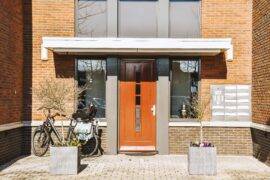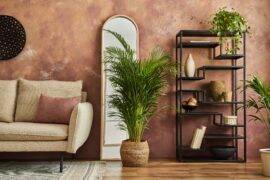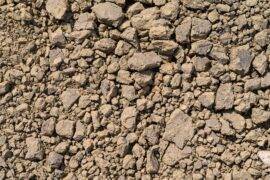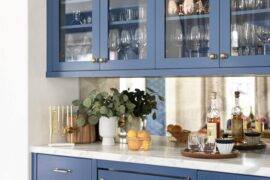Indigo is a captivating color that often leaves people wondering, “What color is indigo?” This enigmatic hue sits between blue and violet on the color spectrum, creating a rich and deep visual experience. Whether you’re asking “Is indigo blue or purple?” or exploring the “indigo blue color” for your home decor, understanding the nuances of indigo can help you make informed design choices. We will be delving into the various shades of indigo in this article, from light tints to profound dark tones, and offer practical insights on incorporating this versatile color into your living spaces.
Defining What Color Is Indigo
Indigo is an enigmatic color, often described as the deeper end of the blue spectrum with a hint of violet. Its character is reminiscent of the twilight sky, a blend of the deepest blue of nightfall tinged with a subtle violet hue. This gives indigo a richness and depth not commonly found in the standard blue palette.
Setting indigo apart from its color cousins, navy blue and royal blue, lies in its unique depth and subtle purple undertone. While navy blue is almost akin to a dark, midnight blue, and royal blue boasts a brighter, more vivid presence, indigo whispers of mystery and introspection. It’s darker than royal blue but not as saturated as navy, striking a delicate balance that makes it both versatile and striking.
Indigo’s context extends beyond its visual appeal. It’s a color with a rich heritage, often associated with wisdom, integrity, and deep thought. In many cultures, indigo is more than just a color; it’s a representation of deeper consciousness and spiritual guidance. This historical and cultural significance adds layers to its use in design, art, and fashion, making it a color that not only stands out visually but also resonates with meaning.
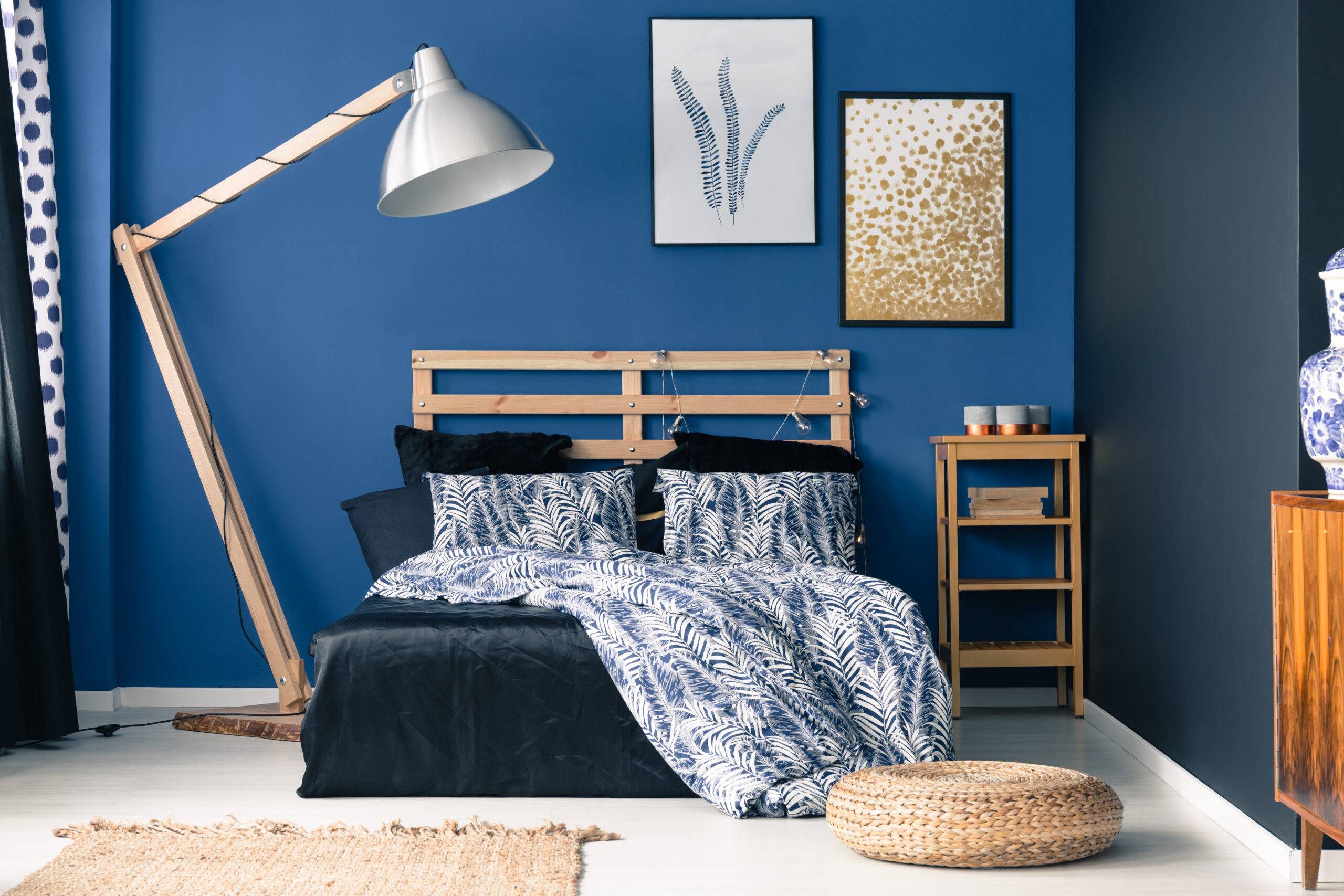
III. Shades of Indigo
Embark on a colorful journey through the shades of indigo, a hue that offers a splendid spectrum. Indigo isn’t just one color; it’s a symphony of shades, each with its own story and mood.
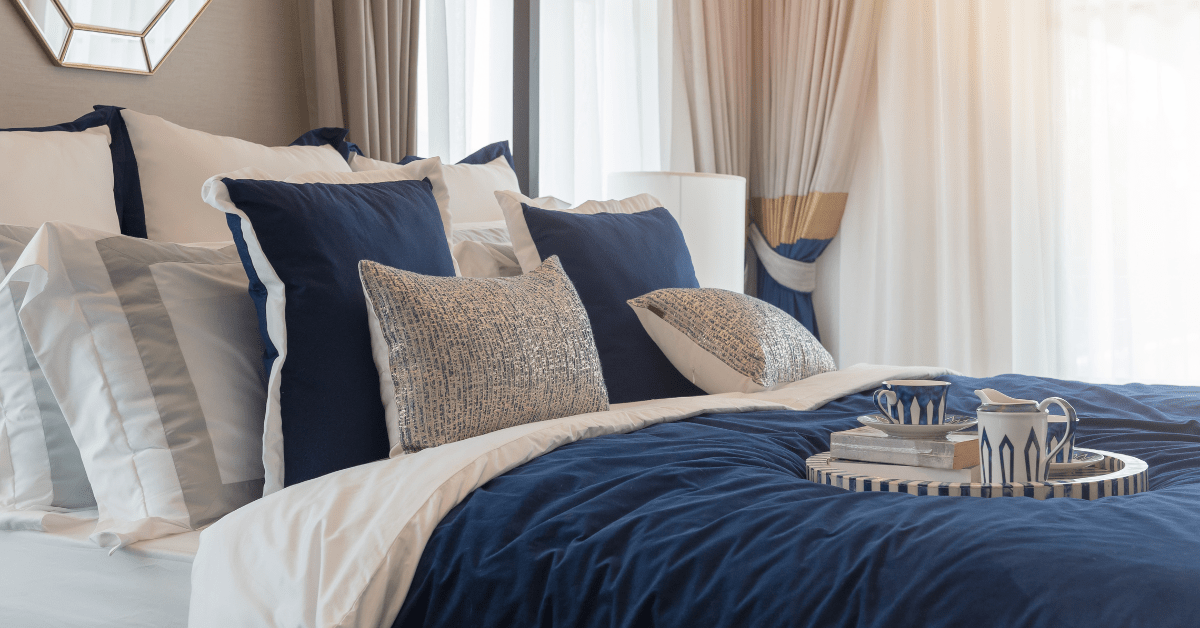
Light Indigo: Picture a soft, dreamy blue with hints of violet. This lighter shade of indigo is almost whimsical in its nature. It’s perfect for creating a relaxed and soothing atmosphere in spaces like bedrooms or bathrooms. Light indigo walls can make a small room feel more spacious and airy, while still adding a touch of color.
Classic Indigo: Then comes the classic indigo, the star of the show. This is the truest representation of the color, a rich and vibrant blue with just the right amount of violet. It’s like looking at the deep ocean from a cliffside. This shade is ideal for making a statement. Whether it’s a feature wall, a large rug, or a sofa, classic indigo adds a layer of sophistication and depth to any living space.
Dark Indigo: At the deeper end, we find dark indigo. This shade is bold and intense, reminiscent of a clear night sky. It’s a luxurious and powerful color that works well in large, well-lit spaces, where it can create a feeling of coziness and luxury. It pairs beautifully with gold accents, rich woods, and soft lighting, creating a space that’s both inviting and stylish.
Each shade of indigo has its unique appeal and can be used to create different visual impacts in your home. Whether you’re looking for a calming retreat, a vibrant living area, or a sophisticated space for entertaining, there’s an indigo shade that can help you achieve your vision. So, don’t be afraid to experiment with this versatile and enchanting color!
The Psychological Impact of Indigo
Indigo, a color that strikes a unique balance between calming blue and invigorating violet, carries profound psychological implications. It often evokes feelings of deep tranquility and spiritual awareness, making it an ideal choice for spaces designed for reflection or meditation. In home decor, indigo can create a sense of stability and depth, promoting both mental clarity and emotional well-being. This color’s ability to inspire introspection and calmness makes it a favored choice for bedrooms, study areas, and spaces where relaxation and contemplation are key.
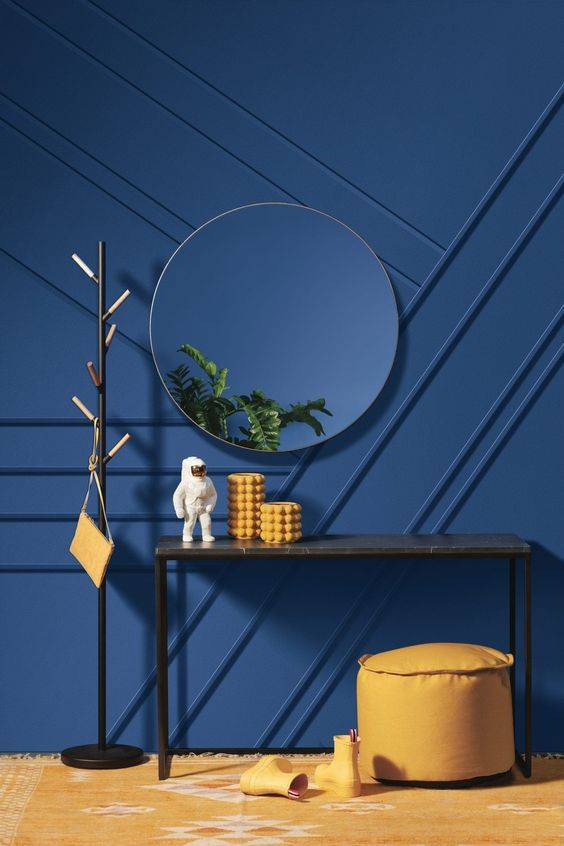
VI. Indigo in Different Design Styles
Indigo’s versatility allows it to adapt seamlessly across a range of design styles, from modern to bohemian to minimalist, adding depth and character to each.
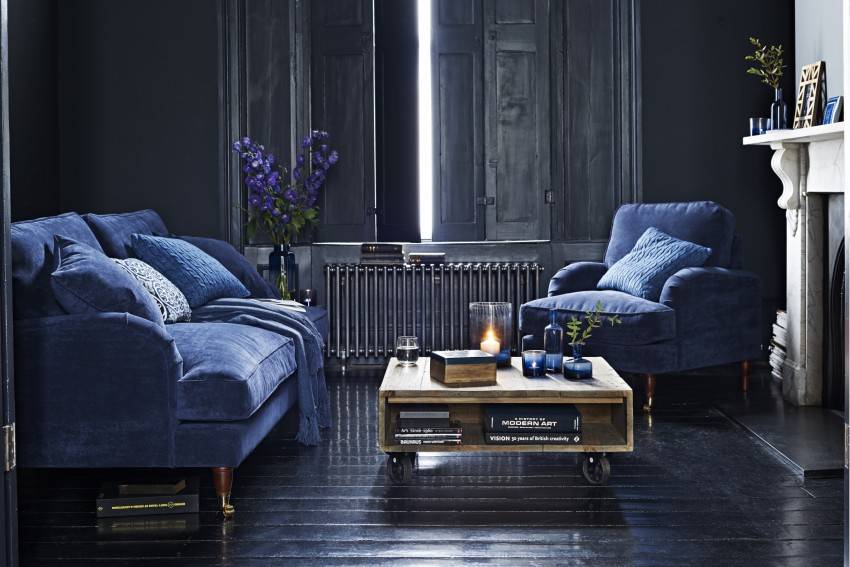
Modern Design: Indigo brings a touch of sophistication to a modern setting. Imagine a sleek living room with indigo as a statement wall, contrasted with minimalist furniture and metallic accents. In modern kitchens, indigo cabinets can be paired with stainless steel appliances and white countertops for a chic look.
Bohemian Style: Bohemian decor, known for its eclectic and free-spirited nature, embraces indigo in a more relaxed, textural form. Think of indigo-dyed textiles, like throw pillows or area rugs, mingling with warm earth tones and natural elements. An indigo tapestry or a collection of indigo pottery can add a rich, artistic vibe to a boho-inspired room.
Minimalist Approach: For minimalist spaces, where less is more, indigo can act as a bold yet unobtrusive accent. A single piece of indigo artwork or a few carefully chosen accessories like vases or cushions can add a burst of color to an otherwise monochrome or neutral room. In minimalist bedrooms, indigo bed linens can create a serene focal point without overwhelming the space’s simplicity.
More Articles From Us:
Understanding what color is indigo can significantly enhance your interior design endeavors. Whether you perceive indigo as more blue or purple, each shade—from light indigo to dark indigo—offers unique opportunities to transform your space. The versatility of the indigo blue color allows it to seamlessly blend into various design styles, from modern sophistication to bohemian charm. Embracing this enigmatic hue can add depth, character, and a touch of elegance to any room. So, don’t hesitate to incorporate this captivating color into your design palette and watch as it transforms your home into a haven of beauty and tranquility.
Ready to bring new life to your home? Subscribe to our newsletter for exclusive interior design tips, trends, and ideas that will transform your space. Click here to subscribe!
FAQs
What Color is Indigo?
Indigo is a deep and rich color that sits somewhere between blue and violet on the color spectrum. Often described as a dark purplish blue, it has a unique hue that can sometimes appear more blue or more purple depending on the light and context. Historically, indigo dye was extracted from plants and used in textiles, making it a color with both cultural and historical significance.
Is Indigo Blue or Purple?
Indigo is often a subject of debate when it comes to its exact classification. While some people see it as a shade of blue, others argue that it leans more towards purple. The truth is that indigo is a blend of both colors, which is why it can sometimes appear more blue in certain lights and more purple in others. This duality is what makes indigo such a fascinating and versatile color.
What is Indigo Blue Color?
Indigo blue is a specific shade within the indigo spectrum that leans more towards blue than purple. It’s a deep, rich color that evokes a sense of depth and tranquility. Indigo blue is often used in fashion and design to create a sense of elegance and sophistication. Whether in clothing, home decor, or art, indigo blue adds a touch of timeless beauty.
What is Indago Color?
“Indago” appears to be a common misspelling of “indigo.” The correct term, indigo, refers to the deep blue-purple hue that has captivated people for centuries. If you encounter “indago” in your search for colors, rest assured that it likely refers to the same rich and complex shade of indigo.
What is Indego Color?
Similar to “indago,” “indego” seems to be another misspelling of “indigo.” Despite the spelling variations, the color in question remains the same—a captivating blend of blue and purple that has been used in art, fashion, and design for generations. If “indego” catches your eye, you’re still looking at the beautiful and enigmatic indigo color.
Indigo vs. Blue: What’s the Difference?
Indigo and blue are closely related, but they are distinct colors. Blue is a primary color, pure and straightforward, while indigo is a secondary color created by mixing blue and violet. This combination gives indigo its unique depth and complexity. While blue is often associated with calm and stability, indigo adds a layer of mystery and richness.
What is Indigo Color?
Indigo is a color that lies between blue and violet on the color wheel. It’s known for its deep, rich hue that can vary from a more blueish tint to a more purplish shade. Historically, indigo dye was highly valued and used in various cultures for textiles and art. Today, it continues to be a popular choice in fashion, interior design, and art due to its versatility and depth.
Blue vs. Indigo: How to Tell Them Apart?
While blue and indigo are similar, they have distinct differences. Blue is a primary color that is bright and clear, often associated with the sky and the ocean. Indigo, on the other hand, is a deeper, more complex color created by mixing blue with violet. This gives indigo a richer, more mysterious quality that sets it apart from the straightforward nature of blue.
Indigo Color vs. Violet: How Do They Compare?
Indigo and violet are both colors found in the visible spectrum, but they have distinct characteristics. Indigo is a blend of blue and violet, giving it a darker and more muted appearance. Violet, however, is a pure color that is more vibrant and closer to purple. While indigo has a calming, deep quality, violet is often seen as more energetic and vivid.
What Color is Indigo Blue?
Indigo blue is a specific shade within the indigo color family that leans more towards blue than purple. It’s a deep, rich color that is often used to evoke a sense of calm and sophistication. Indigo blue can be found in various applications, from fashion to interior design, where its timeless elegance makes it a popular choice.


